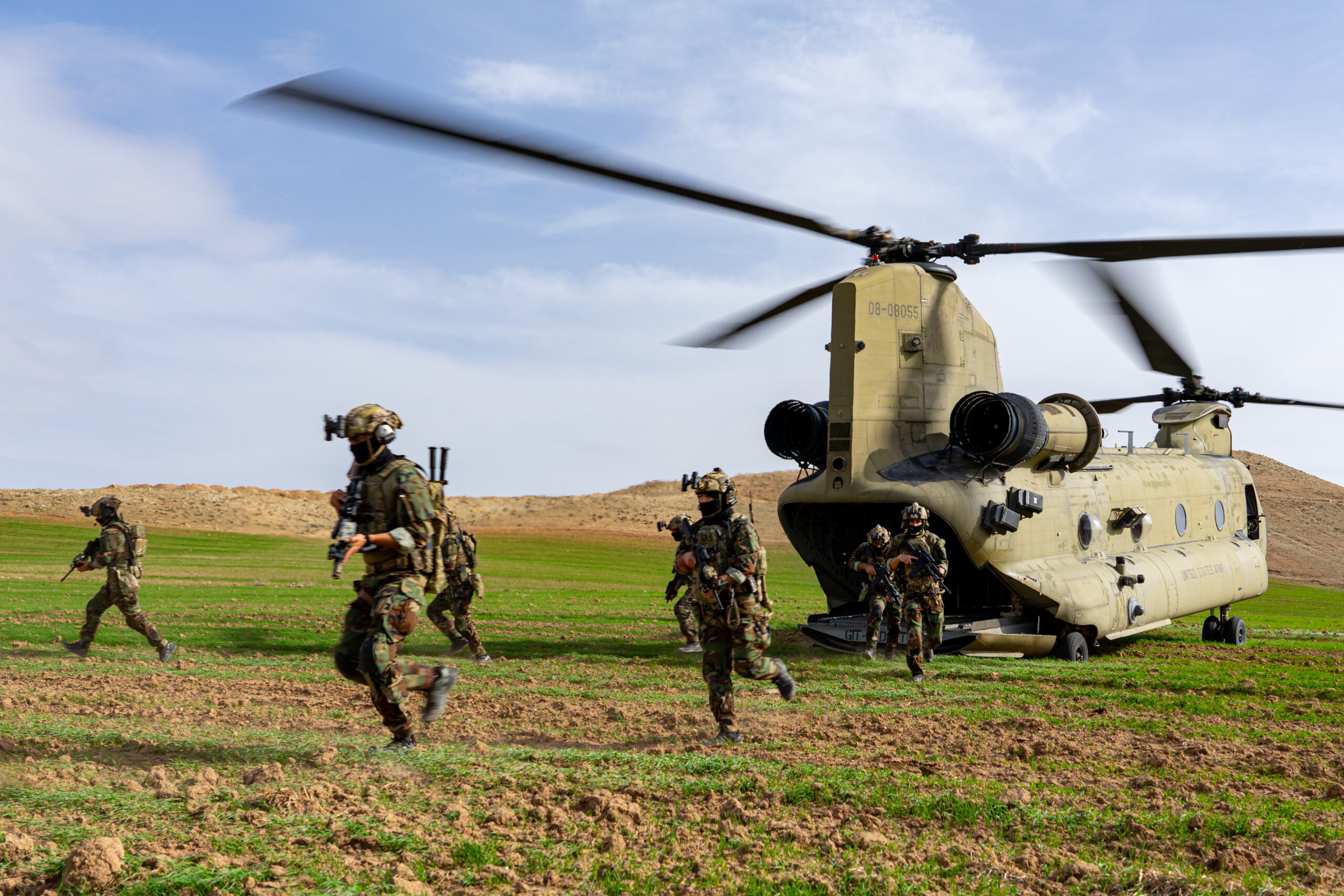How to Withdraw From Iraq Within Five Years
Two decades of intervention
March 2023 marked two decades since the U.S. invasion of Iraq. Saddam Hussein is long gone, memories of the post–invasion civil war are fading (from the American mind, at least), parliamentary elections are routine, and the ISIS threat has been significantly degraded. Iraq is currently on a stable trajectory, and for the most part, the domestic and foreign political and perceptual costs of both intervention and withdrawal have already been incurred.
The problems that remain seem impervious to military solutions: these include pervasive corruption, environmental crises that endanger the means of livelihood, coalition politics that ignore the needs of Iraqis, resource competition between federal Iraq and the Iraqi Kurdistan region, as well as a significant youth bulge shouldered with high unemployment and few opportunities for upward mobility. Iraq’s economy is far from its potential, with the majority of its people excluded from the wealth enjoyed by a select few elites. Only Iraqis can resolve these problems.
U.S. strategic interests in the region are limited to preventing outside hegemony and ensuring the unimpeded flow of fossil fuels.
Regional instability threatens these interests by creating openings for outside powers, driving energy prices up, and possibly resulting in jihadist attacks against Americans. While such attacks are not strategically significant, they can lead to disproportionate responses that do not serve U.S. interests. The U.S. has a national interest in a stable Iraq but must balance it against the costs of continuing a military intervention that has effectively lasted for two decades.
What role do U.S. troops play in Iraq?
The United States remains the most important enabler of Iraq’s security forces and largest single donor of humanitarian assistance to Iraq. Approximately 2,500 U.S. troops remain in Iraq today. In 2022, U.S. Central Command conducted 313 total operations against ISIS, mostly partnered with local forces, killing 466 ISIS fighters in Syria and at least 220 in Iraq.1 Today, U.S. troops remain in Iraq at the invitation of the Iraqi government based on the U.S.–Iraq Strategic Framework Agreement that was first signed in 2008. Washington and Baghdad’s commitment to the Framework Agreement was reinforced during the Strategic Dialogue initiated by the Trump administration in June 2020 and concluded by the Biden administration in July 2021. Prime Minister Mohammed Shia’ al–Sudani also reaffirmed Iraq’s request for the continued presence of U.S. troops in an advisory role without specifying a timetable.2
Policymakers in the White House and Pentagon view the U.S. ground and air presence in Iraq and Syria as a means of suppressing ISIS’s ability to destabilize Iraq, to the extent that the United States would be impelled to intervene on a larger scale and with much greater violence. U.S. planners regard Iraq and Syria as a unified theater of operations because of the highly permeable border between the two countries.3 The desire to prevent ISIS from again flowing into Iraq from Syria has been a factor in the U.S. military presence in the latter country, which increasingly looks to be a long–term feature of its regional footprint, despite significant risks of escalation with Iran. The U.S. CENTCOM mission in Syria is also dependent on logistical support from Iraq. “Our ability to withdraw from Syria, as President Trump ordered in December 2018, was 100 percent dependent upon Iraq for success,” explained General Joseph Votel.4
Policymakers in the White House and Pentagon view the U.S. ground and air presence in Iraq and Syria as a means of suppressing ISIS’s ability to destabilize Iraq, to the extent that the United States would be impelled to intervene on a larger scale and with much greater violence.
The 2,500 U.S. troops remaining in Iraq today are organized under Operation Inherent Resolve (OIR), launched in 2014 to fight ISIS, and the Office of Security Cooperation in Iraq (OSC–I). The primary function of these troops is to train and advise Iraq’s security forces to increase their ability to operate independently. But this mission is hindered by internecine tensions within the Iraqi military, which is composed of both regular and paramilitary units that report to different commands, with commanders often refusing to coordinate with each other. It is also a hybrid army composed of both regular and paramilitary units that report to different commands. OIR “hangs its hat” on the Iraqi Joint Operations Command for Iraq (JOC–I) which is responsible for planning and conducting military operations, as well as coordinating the efforts of various Iraqi security forces.5 But the JOC–I is generally unwilling to coordinate with the Counter Terrorism Service, which leads to complications.6 The CTS itself remains heavily reliant on the United States for Intelligence, Surveillance and Reconnaissance (ISR).
The logic of leaving
The relative peace that has settled in Iraq, partly due to the role U.S. troops played in degrading ISIS, has led some in Washington to prefer a permanent U.S. military presence.7 Others view Iraq as a place where Washington should challenge Iran.8 Critics of any plan to drawdown may ask, “why upset the status quo?” The presence of 2,500 U.S. troops serves as a pilot light, ready to be ignited and rapidly increased should the need arise. But this logic only holds true if one discounts long–term uncertainties relating to Iraq’s political development, U.S. domestic politics, and the emergence of new military threats that would make even a minimal footprint in Iraq untenable. Staying the course without developing a clear exit strategy increases the probability of a hastily executed withdrawal in the future.
U.S. interests in Iraq compel a medium-term “advise, assist, and enable” mission, but the benefits of this mission will diminish over time and the costs of withdrawal will decrease proportionally. While some critics of ending military intervention point to permanent U.S. bases in other countries such as Germany or South Korea, it is important to consider the different strategic, political, and societal conditions that led to their establishment.9 Unlike other places where there is a permanent U.S. military presence, U.S. troops in Iraq remain under considerable threat. There is also a risk of escalating conflict between the U.S. and Iranian proxies in Iraq. Additionally, while many Iraqi stakeholders benefit from the presence of U.S. troops, Iraqi society as a whole is arguably less amenable to a permanent U.S. troop presence than some other places. Ultimately, it is not feasible to keep U.S. troops in Iraq indefinitely. This begs the question, for how long? An open–ended commitment, or even one measured by progress towards key benchmarks, undermines Iraq’s incentive to develop and maintain an independent capability and encourages Iraqi government corruption and mismanagement since U.S. troops are viewed as a fail–safe against a complete collapse of security conditions à la 2014. It also jams a future U.S. administration wishing to withdraw to focus on other priorities.
The notion of a “calendar–based withdrawal” has become taboo in Washington due to the redeployment of U.S. combat troops to Iraq after the rise of ISIS and the history of the Obama administration setting deadlines for the surge in Afghanistan. But blaming military failures on premature drawdowns oversimplifies the situation and draws the wrong lessons. The Taliban’s resilience can be attributed to factors such as group cohesion, delegation of authority, ideological beliefs, and community roots, rather than Washington’s commitment level. Concealing the end date of the surge may have increased leverage in negotiations, but it would not have led to victory. Similarly, corruption and poor leadership played a role in undermining Iraq’s forces, and Prime Minister Nouri al–Maliki’s abuse of Sunni communities marginalized Sunni leaders who supported the government in Baghdad as they appeared as stooges of an oppressive regime. This gave ISIS an advantage.
Staying the course without developing a clear exit strategy increases the probability of a hastily executed withdrawal in the future.
The presence of U.S. troops can sometimes play a mediating role and tamper down the worst inclinations of a host country’s leadership, but it cannot resolve the failures of governance that drive conflicts. U.S. troops can also trigger nationalist opposition if they overstay their welcome, or if U.S. soldiers commit abuses or crimes (e.g., Okinawa in Japan). Over the next five years, the U.S. focus should be on enabling Iraqi partner forces to achieve an acceptable level of competence and readiness, with the utmost emphasis placed on operating independently from mission planning to execution. When it comes to security force assistance, the perfect is very much the enemy of the good. Most importantly, U.S. diplomacy within Iraq and the region must be dynamic, calculated, and bold.
Withdrawing but not disengaging
Withdrawing from Iraq will reduce U.S. influence in Iraq and reduce Washington’s ability to assess the progress of its security forces or gather intelligence. Nevertheless, bilateral diplomatic relations do not typically rely on U.S. deployed forces and normalization of the U.S.–Iraq relationship will ultimately entail the drawdown of U.S. forces. Executing a medium–term drawdown while sustaining support in the short–term is a difficult needle to thread for U.S. policymakers and military planners. The proposal outlined below offers a glide path toward a normalized, non–military relationship with the Iraqi state.
First, recognizing the potential limits and risks of advise and assist programs, Operation Inherent Resolve should be replaced with a smaller group of advisors and special operators organized around the Office of Security Cooperation-Iraq (OSC-I) in Baghdad, with a small Title 10 mission under U.S. Central Command assisting with training and Intelligence, Surveillance, and Reconnaissance (ISR).10
Second, all U.S. troops should be withdrawn from Iraq within five years, except for Marine Security Guards for the Embassy and OSC-I personnel under the U.S. Mission. However, temporary combined training exercises, military delegations, and combined planning efforts using TDY personnel should continue if both countries wish.
When it comes to security force assistance, the perfect is very much the enemy of the good. Most importantly, U.S. diplomacy within Iraq and the region must be dynamic, calculated, and bold.
Third, the capacity of Iraqi partner forces, such as the Counter Terrorism Service (CTS) and Federal Intelligence and Investigation Agency (FIIA), should continue to be developed, with an emphasis on mission planning and coordination, ISR, and combined arms capabilities. Greater coordination should also be sought between these units and the Joint Operations Command for Iraq (JOC-I). This will require the development of alternative methods for conducting training and joint military drills with Iraqi partner forces inside and outside of Iraq, including in neighboring countries and the United States, to compensate for the reduction of the quality of training for Iraq’s security forces as a result of the withdrawal.
Finally, in combination with European allies and regional partners, resources will be needed to mitigate the challenge posed by al–Hol and other ISIS–dominated camps in Syria, to support stability in northeast Syria.11 General Joseph Votel (Ret.), who led USCENTCOM from March 2016 to March 2019, referred to al–Hol and similar camps as “powder kegs for the next generation [of terrorist]” in a QI interview.12
These recommendations will allow for a full withdrawal of U.S. troops from Iraq, with a focus on long–term training similar to the U.S. military’s activities in other regional countries where relations are normalized.13 These steps would ensure the degradation of ISIS in the short–term, the technical and organizational development of the most effective units within Iraq’s security forces, and a transition to a more normalized state of U.S.-Iraq relations.
Program
Citations
“CENTCOM – YEAR IN REVIEW 2022: THE FIGHT AGAINST ISIS,” U.S. Central Command, December 29, 2022, https://www.centcom.mil/MEDIA/PRESS-RELEASES/Press-Release-View/Article/3255908/centcom-year-in-review-2022-the-fight-against-isis. ↩
David Cloud and Michael Amon, “Iraqi Prime Minister Supports Indefinite U.S. Troop Presence,” Wall Street Journal, January 15, 2023, https://www.wsj.com/articles/iraqi-prime-minister-supports-indefinite-u-s-troop-presence-11673785302. ↩
Although U.S. troops in Syria are not at the invitation of the Syrian government, and so in violation of Syrian sovereignty. ↩
General Joseph Votel, interview with authors, November 10, 2022. Votel added that the Syria mission would be severely compromised if the United States withdrew from Iraq, but the al–Tanf component of the mission could be supported from Jordan so long as the Jordanians would continue to cooperate. Votel assessed that a drawdown in Iraq would probably occur in tandem with a drawdown in Syria. ↩
Author interviews with senior U.S. military commanders. ↩
Department of Defense Office of Inspector General. “Lead Inspector General for Operation Inherent Resolve I Quarterly Report to the United States Congress I July 1, 2022 — September 30, 2022,” November 1, 2022, https://www.dodig.mil/Reports/Lead-Inspector-General-Reports/Article/3205886/lead-inspector-general-for-operation-inherent-resolve-i-quarterly-report-to-the. ↩
See Ben Connable, “An Enduring American Commitment in Iraq: Shaping a Long-Term Strategy with Iraqi Army Partners,” Santa Monica, California, RAND Corporation, 2020, https://www.rand.org/pubs/perspectives/PE353.html; Ben Connable, James Dobbins, Howard J. Shatz, Raphael S. Cohen, and Becca Wasser, “Weighing U.S. Troop Withdrawal from Iraq: Strategic Risks and Recommendations.” Santa Monica, California, RAND Corporation, 2020, https://www.rand.org/pubs/perspectives/PE362.html; Meghann Myers, “U.S. troops will likely be in Iraq for years to come, Central Command boss says,” Military Times, March 18, 2022, https://www.militarytimes.com/news/pentagon-congress/2022/03/18/us-troops-will-likely-be-in-iraq-for-years-to-come-central-command-boss-says. ↩
Michael Knights, “Biden Wants to Leave the Middle East, But He’s in a Vicious Bombing Cycle in Iraq,” Politico, July 2, 2021, https://www.politico.com/news/magazine/2021/07/02/biden-iraq-bombing-vicious-cycle-497699. ↩
These examples are not without costs and potential liabilities. ↩
The United States Code (U.S.C.) Title 10 outlines the legal framework, role and responsibilities of the Department of Defense and its military missions, while U.S.C. Title 22 does the same for how the United States conducts its foreign policy through the Department of State, foreign assistance, and public diplomacy. It is also important to understand that while the Department of Defense administers security cooperation programs that are authorized under Title 10, there are also State Department security assistance programs authorized under Title 22 that are nevertheless implemented by the Department of Defense. ↩
This refers to the resources needed to run the camps in a humane manner and repatriate former ISIS families to Iraq, Syria, other Middle Eastern countries, and Europe. ISIS is also present in Deir ez–Zor and has a covert presence in Raqqa, hoping to wait out a U.S. withdrawal. ↩
General Joseph Votel, interview with authors, November 10, 2022. ↩
A full withdrawal would exclude Marine Security Guards for the protection of the Embassy and OSC–I personnel under the U.S. Mission. ↩





